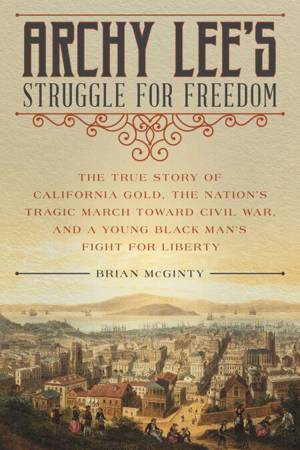
- Retrait en 2 heures
- Assortiment impressionnant
- Paiement sécurisé
- Toujours un magasin près de chez vous
- Retrait gratuit dans votre magasin Club
- 7.000.0000 titres dans notre catalogue
- Payer en toute sécurité
- Toujours un magasin près de chez vous
Archy Lee's Struggle for Freedom EBOOK
The True Story of California Gold, the Nation's Tragic March Toward Civil War, and a Young Black Man's Fight for Liberty
Brian McGinty
Ebook | Anglais
21,24 €
+ 21 points
Description
In San Francisco, CA, in 1858, a young African American man was freed from the claims of a white man who sought to return him to slavery in Mississippi. This was one year after the Supreme Court’s notorious Dred Scott decision and during the California Gold Rush, which saw the population of the state rise from 7,000 to more than 60,000 in a few short years.
Archy Lee was the name of the man who, with the aid of anti-slavery lawyers and determined opponents of human bondage, had just won his freedom from the claims of Charles Stovall. With the aid of pro-slavery lawyers and equally determined supporters, Stovall had sought to capture him and carry him back to a far-away slave plantation.
Yet the book is not solely about Archy Lee. It is also about the travel routes that the gold-seekers followed to California in the 1850s, some by land over the Great Plains, some by sea around Cape Horn, yet others by sailing from the east coast of North America to the isthmus of Panama, where they crossed over the land there by train and continued on by sea to San Francisco. It is about the efforts of the racially motivated lawmakers to suppress the rights of all of California’s residents except whites, and to subject people of African, Asian, Hispanic, and Native American descent to second-, third-, or even fourth-class citizenship. It is about the residents of the state—including many whites—who fought back against those efforts, seeking to ameliorate or repeal the discriminatory laws and introduce a measure of fairness and justice into California’s civil life. It is about the lawyers and judges who participated in Archy Lee’s legal struggles in 1858, some supporting his claims for freedom while others ferociously opposed them and, in the process, elevated their own political and professional profiles.
Archy Lee was the name of the man who, with the aid of anti-slavery lawyers and determined opponents of human bondage, had just won his freedom from the claims of Charles Stovall. With the aid of pro-slavery lawyers and equally determined supporters, Stovall had sought to capture him and carry him back to a far-away slave plantation.
Yet the book is not solely about Archy Lee. It is also about the travel routes that the gold-seekers followed to California in the 1850s, some by land over the Great Plains, some by sea around Cape Horn, yet others by sailing from the east coast of North America to the isthmus of Panama, where they crossed over the land there by train and continued on by sea to San Francisco. It is about the efforts of the racially motivated lawmakers to suppress the rights of all of California’s residents except whites, and to subject people of African, Asian, Hispanic, and Native American descent to second-, third-, or even fourth-class citizenship. It is about the residents of the state—including many whites—who fought back against those efforts, seeking to ameliorate or repeal the discriminatory laws and introduce a measure of fairness and justice into California’s civil life. It is about the lawyers and judges who participated in Archy Lee’s legal struggles in 1858, some supporting his claims for freedom while others ferociously opposed them and, in the process, elevated their own political and professional profiles.
Spécifications
Parties prenantes
- Auteur(s) :
- Editeur:
Contenu
- Nombre de pages :
- 264
- Langue:
- Anglais
Caractéristiques
- EAN:
- 9781493045358
- Date de parution :
- 16-12-19
- Format:
- Ebook
- Protection digitale:
- Adobe DRM
- Format numérique:
- ePub

Seulement chez Librairie Club
+ 21 points sur votre carte client de Librairie Club
Les avis
Nous publions uniquement les avis qui respectent les conditions requises. Consultez nos conditions pour les avis.






